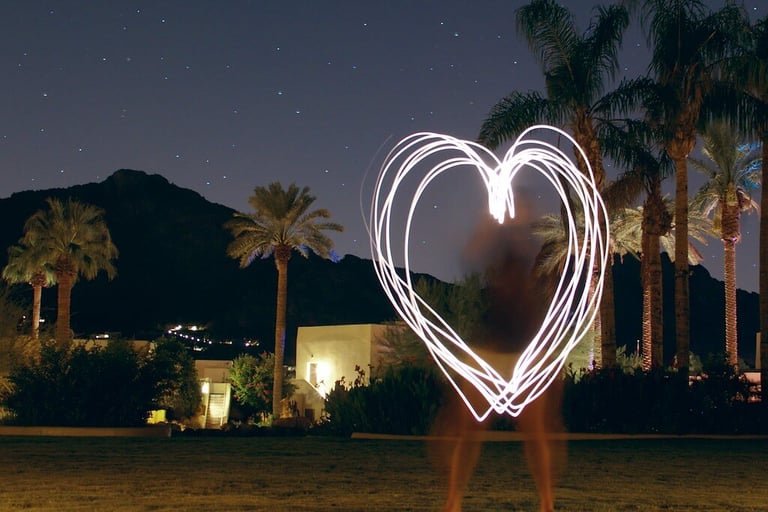Light Painting
Here are some essential tech tips for light painting photography to help you create stunning images:
Camera Settings
Manual Mode: Use manual (M) or bulb mode to control all settings.
Shutter Speed: Set a long exposure time, typically 10–30 seconds or longer, depending on your desired effect. For exposures over 30 seconds, use bulb mode.
Aperture: Use a narrow aperture (e.g., f/8 to f/11) to ensure sharpness and depth of field.
ISO: Keep ISO low (100–200) to minimize noise in the image.
Focus: Use manual focus and pre-focus on the area where the light painting will occur. Use a flashlight to illuminate the subject temporarily for focusing in the dark.
Essential Equipment
Tripod: A sturdy tripod is crucial to keep the camera stable during long exposures.
Remote Shutter Release: Use a remote or intervalometer to avoid touching the camera and introducing vibrations.
Light Sources: Experiment with flashlights, LED wands, glow sticks, or even smartphone lights. Colored gels can add creative effects.
Extra Batteries: Long exposures and lighting devices consume power quickly, so carry spares for both your camera and lights.
Base Exposure: Determine the ambient light exposure first by testing at a higher ISO and scaling down to your desired ISO for accurate long-exposure timing.


More Tips
Painting Angles: Illuminate objects from various angles (e.g., side or above) to highlight textures and create depth.
Movement Speed: Adjust how fast you move your light source to control brightness and shading effects.
Reflective Surfaces: Experiment with reflective materials like glass or metal for unique effects, but adjust angles carefully to avoid harsh reflections
Tips for Best Results
Plan your composition during daylight to visualize the scene before it gets dark.
Wear dark, non-reflective clothing to avoid appearing in the frame accidentally.
Use Live View mode on your camera's LCD screen to preview your shot before starting.
Avoid touching the camera during exposure; even slight vibrations can blur the image.
By mastering these techniques and experimenting with different tools and settings, you can create captivating light painting photographs!